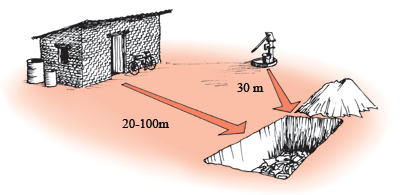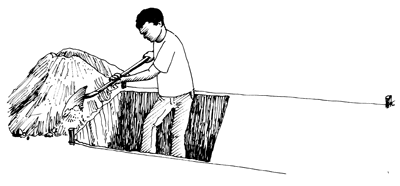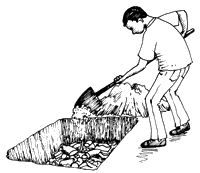A rubbish pit is a way of disposing of household waste by burying it, after it has been reduced or recycled as much as possible. This helps prevent contamination of water supplies and breeding of flies and rats which may spread disease to people in the community. A rubbish pit reduces unpleasant smells and removes household waste from sight.
Household rubbish should be sorted before it is considered for the rubbish pit. Organic materials, such as vegetable peelings, should be used to make compost. Other types of household rubbish could be reused or recycled. Avoid putting batteries and other toxic waste in a rubbish pit as these will contaminate the soil and water sources.
An average rubbish pit should be the size of two or three doors. This size of rubbish pit will last for about five years for an average family. For large households, the rubbish pit could be bigger.
Selecting a site
The following factors should be considered:
Distance The rubbish pit should be far enough from wells and streams to protect water sources from contamination. More than 30m is recommended. It should be far enough from houses to stop people falling in, but not so far that waste has to be carried a long way. Between 20m and 100m is recommended.












